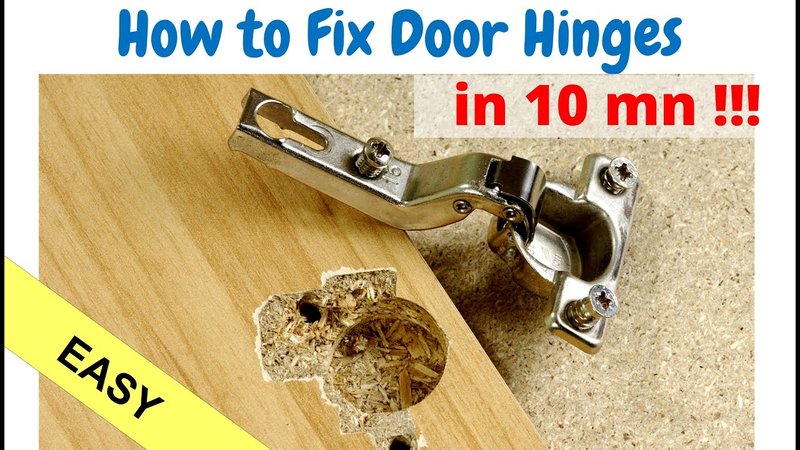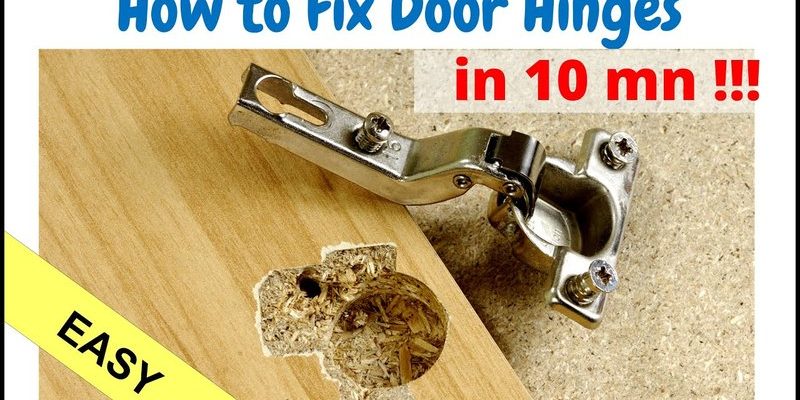
Repairing door hinges might sound intimidating at first, but it’s a pretty straightforward task. You can save yourself a service call by tackling this issue at home. In this guide, we’ll go through the steps needed to fix those pesky hinges and ensure your door operates smoothly. Whether you have a basic hinge on an interior door or a more complex one on an exterior door, the principles are similar.
Understanding How Door Hinges Work
To get started, it’s helpful to know a bit about how door hinges function. At its core, a hinge is a simple machine—a pivot point that allows a door to swing open and closed. The barrel of the hinge is the cylindrical portion where the pin resides, allowing the two halves of the hinge to move. When there’s play in the hinge barrel, it means the pin isn’t fitting snugly anymore. This can lead to misalignment and other annoyances, like noises and difficulty closing the door properly.
Hinges come in various types and sizes, designed for different applications and loads. For example, a lightweight bathroom door might have a simpler hinge compared to a heavy front door, which requires something sturdier and more robust. Knowing your hinge type will help you choose the right methods for repairing it.
Identifying Play in the Barrel
Before you dive into repairs, it’s crucial to properly assess the situation. Play in the barrel is usually characterized by noticeable movement when you push or pull the door. Here are a few signs to look out for:
- Noise: A squeaking or creaking sound when opening or closing the door.
- Alignment issues: The door may not align properly with the frame.
- Wobbling: The door may feel loose or wobbly when moved.
You might be wondering, “How much play is too much?” If you can wiggle the door, or if it feels like it’s about to fall off the hinge, then it’s time to take action. Don’t worry—this is a common issue, and with a little patience, you can fix it.
Gathering Your Tools and Materials
Now that you know there’s a problem, it’s time to gather the tools you’ll need for the repair. Here’s a list of essentials:
- Screwdriver: Either a Phillips or flathead, depending on your hinge screws.
- Hinge pin: You might need a replacement if yours is too worn.
- Lubricant: WD-40 or a similar product to ease movement.
- Wood filler: If the screw holes are stripped, this will help fill the gaps.
- Screws: Extra screws in case any break during removal.
Having the right tools on hand makes the process smoother and more efficient. When you’re ready, let’s move on to the actual repair.
Removing the Hinge from the Door
Now comes the fun part—removing the hinge from the door. Here’s how to do it:
1. Support the Door: Use a doorstop or a wedge to prop the door so it doesn’t swing while you work.
2. Loosen the Screws: Start with the screws holding the hinge to the door. Use your screwdriver to unscrew them carefully. Keep the screws in a container so you don’t lose them.
3. Remove the Hinge: Once all screws are out, gently pull the hinge away from the door and the frame. If it’s stuck due to paint or rust, wiggle it back and forth gently.
Remember to be cautious, as a heavy door might shift once the hinge is removed. Having a second person to help can make this step easier and safer.
Fixing the Play in the Barrel
With the hinge removed, it’s time to address the play in the barrel. Depending on the condition of your hinge, here are some methods you can use:
– Replace the Hinge Pin: If your hinge pin is worn or bent, replacing it can solve the problem. Simply slide out the old pin and replace it with a new one. This is often the easiest fix.
– Add Washers: If the hinge itself is still in good shape, adding a washer between the hinge halves can help eliminate the play. This can be especially effective if the barrel is still tight but has started to wear down.
– Fill Stripped Holes: If the screw holes in the door or frame are stripped, use wood filler to fill the gaps. Once dry, re-drill holes and reinsert the screws for a snug fit. This will prevent the hinge from wobbling.
Reattaching the Hinge
Once you’ve addressed the play, it’s time to reattach the hinge. Here’s how to do it:
1. Position the Hinge: Hold the hinge against the door and frame.
2. Insert Screws: Start with the middle screw first, as this helps align everything. Tighten it slightly, but don’t go all the way yet.
3. Add Remaining Screws: Insert the top and bottom screws and tighten them securely.
4. Test the Door: Swing the door open and closed a few times to make sure everything’s functioning smoothly. If there’s still play, double-check your work.
It’s like putting the final piece of a puzzle in place—satisfying and just right.
Maintaining Your Hinges for Longevity
Now that your door hinge is in great shape, it’s essential to take care of it so it stays that way. Here are some simple maintenance tips:
- Regular Lubrication: Every few months, apply a bit of lubricant to the hinges to keep them moving smoothly.
- Check for Wear: Periodically check the hinges for signs of wear or loosening.
- Dust and Clean: Wipe the hinges down to remove any dust or debris that could cause issues.
A little bit of care goes a long way in prolonging the life of your door hinges. Just think of it as giving your door the love it deserves!
Repairing a door hinge with play in the barrel isn’t rocket science—it’s more like fixing a squeaky wheel on a bike. With the right tools and a bit of patience, you can get your door back to working order in no time. Whether you replaced the hinge pin or added a washer, you’ve taken an important step in maintaining your home.
Remember, if you ever feel unsure, it’s okay to ask for help or seek professional advice. But with this guide in hand, you’re well on your way to becoming a pro at door hinge repairs. Now go ahead and enjoy the peace of a smoothly swinging door!
